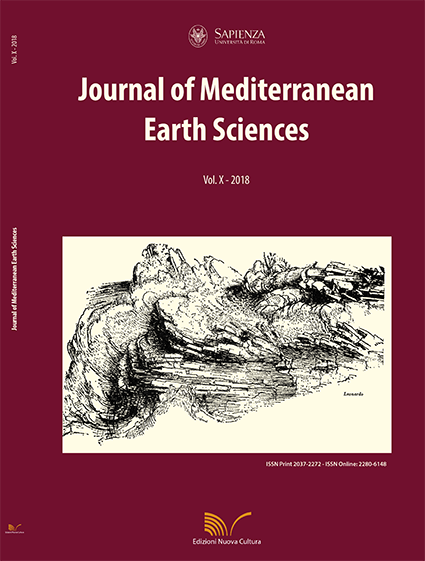Gamma-ray facies in marine paleoplacer deposits of the Punta Serpeddì Formation (Ordovician of SE Sardinia, Italy)
DOI:
https://doi.org/10.3304/JMES.2018.007Abstract
This study analyses the variability of the spontaneous gamma-ray signal linked to heavy minerals in various sedimentary facies of shallow-marine placer deposits of the Punta Serpeddì Formation (Upper Ordovician of SE Sardinia, Italy). The heavy minerals assemblages are mainly made up of titaniferous minerals, zircon and monazite. They were deposited in siliciclastic storm-dominated platform environments. This work is based on sedimentological (facies, sequence stratigraphy) and petrographic analyses combined with outcrop gamma-ray logging. Two facies containing heavy minerals were identified: a shoreface facies dominated by titaniferous minerals and a proximal upper offshore facies composed of zircon, monazite and titaniferous minerals. Depending on relative values of the radioactive signals, it is possible to distinguish three gamma-ray facies: high, medium and low. The first two correspond to fine-grained facies of the proximal part of the upper offshore, whereas the low radioactivity values relate to coarse-grained shoreface facies.
Gamma ray signal can then be used in heavy mineral prospection, as well as in well-log analyses, to refine indirect facies interpretation and their stacking pattern.
Downloads
Published
How to Cite
Issue
Section
License
The submission has not been previously published, nor is it before another journal for consideration (or an explanation has been provided in Comments to the Editor).


